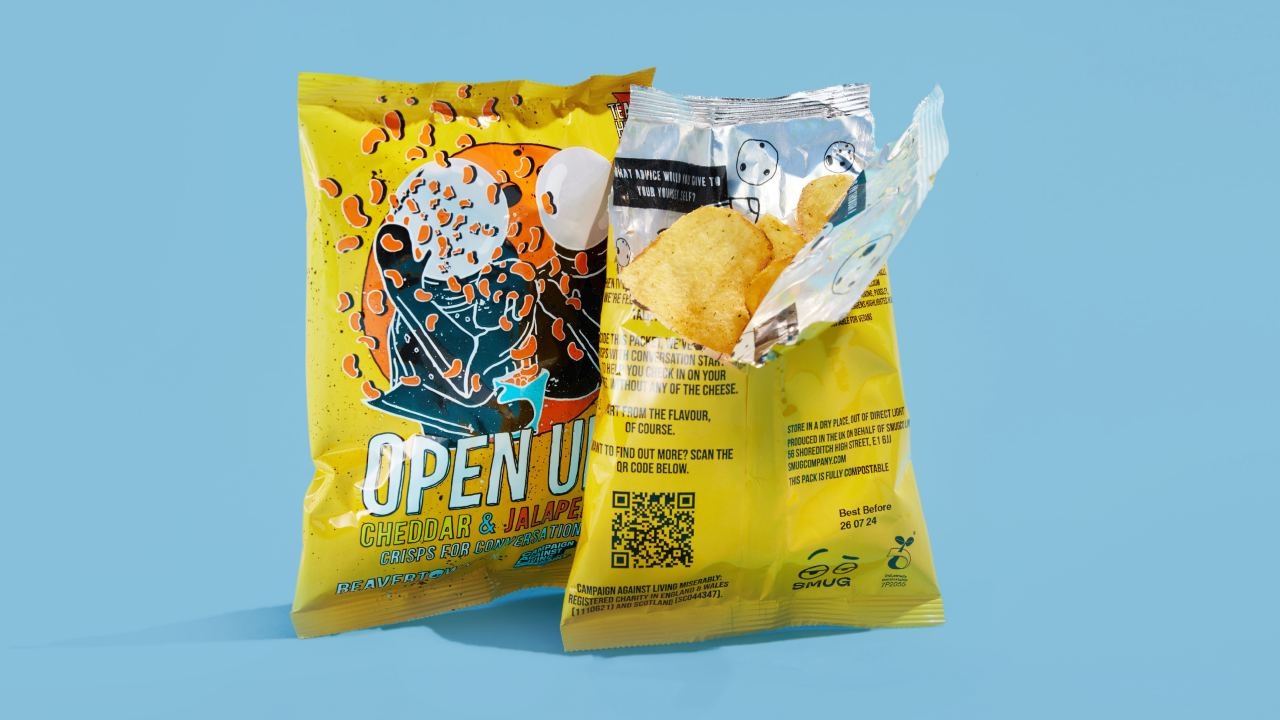Advancing sustainability in a complex value chain

Jules Lejeune, managing director of Finat, looks at challenges and opportunities for self-adhesive labeling
Self-adhesive labels have contributed significant benefits to packaging, and their versatility, cleanliness and variability have made them firm favorites in many key FMCG market sectors – on foods (both as primary and secondary product labels and for ‘priceweigh’ applications and other variable information print); on personal and homecare products; and, particularly, on beverages.
The beverage boom
The global growth in premium beers has proved a dynamic self-adhesive label market around the globe in recent years. Wines – both premium cuvées and bulk supermarket qualities – are today enjoying the eye-catching on-shelf appeal that short- or long-run self-adhesive labels can create, both by the traditional print processes and by today’s high-quality digital label print. This flexibility has made ‘limited editions’ a practical possibility. ‘Fashion’ soft drinks, such as smoothies, juices and CSDs (carbonated soft drinks), are also popular users of the self-adhesive label, which delivers a variety of innovative finishes and effects on a wide choice of label face materials – including textured papers, foils, and clear films (which give the favored ‘no label look’ on a clear container).
A designer’s dream
The unique self-adhesive laminate also makes it possible to die-cut exceptionally complex label shapes on press – a designer’s dream – and to apply multiple labels (front, back, neckstrap etc) in just one pass on the packaging line. Finally, track-and-trace, product authentication, and tamper-evident features can be an intrinsic part of a self-adhesive label.
Sustainability issues
As a key contributor to the global packaging industry, the self-adhesive label industry is as committed to the cause of sustainability as all its peers. However, the value chain in the self-adhesive label industry is extremely long, complex, and specialized – and, in today’s sustainability arena, subject to some unique challenges.
The self-adhesive ‘sandwich’ of a face material – adhesive, release coating and release liner – is in itself a combination of many different constituents, to which are added the printing inks and other on-press processes that deliver a finished label, ready for automatic application to a product. No single level of the value chain can offer a full and detailed picture of the process of delivering a self-adhesive label; but, despite its many different parts, the self-adhesive label industry must present a single, united profile if it is to be able to communicate with, and partner, the brand owners, the retailers and ultimately the consumers in the environmental arena.
It makes sense for an industry association such as Finat, which represents the whole label production value chain – raw material suppliers, labelstock coaters and laminators, and label converters – to take on that responsibility. In this respect, Finat has been working for a number of years on creating and updating industry-standard performance test methods, and – with sister organizations around the world – is working to advance a detailed formal agenda for step-by-step actions to make our industry ‘greener’.
Environmental initiatives
This may not sound too much of a challenge – but, again, the value chain is complex, and there is a proliferation of environmental initiatives in the broad print/packaging manufacturing context, at many levels. There are the environmental management systems like ISO 14001, Lean Six Sigma and the US-based Tag and Label Manufacturers Institute’s industry-specific ‘LIFE’ system (‘Label Initiative For the Environment’). Certifications to environmental sourcing standards – like FSC and PEFC for papers – are other possible pathways. Brand owners’ and end users’ own environmental standards for their suppliers, like the Wal-Mart Supplier Sustainability Assessment, add further complexity.
While the raw material suppliers and the major coater/laminators represent, in the main, manufacturers at a global scale, the self-adhesive label converters themselves are mostly small-to-medium-sized enterprises for whom such additional agendas are difficult to support. Nevertheless, Finat member companies across the value chain are, individually, actively delivering technology solutions to reduce waste all round and improve their carbon footprint; to be REACH-compliant, particularly in relation to adhesives and coatings; to explore new label and release liner substrates and adhesive technologies; and to use thinner materials all round without compromising performance.
A single industry profile
But there are limits to which individual companies operating in a competitive business environment can go in meeting the needs of the ‘three Ps’: people, planet, and profit. So, as I see it, there is a distinct role for an association such as Finat in the label sustainability arena: to combine the aspirations of the many levels of the value chain into a single agenda, and to represent all its members (within the broader context of the global packaging industry) to the ultimate buyers of its products – the brand owners, retailers, and consumers.
The Global Packaging Project
Unquestionably, the brand owners and retailers have established an outstanding initiative on sustainability, in the form of the Consumer Goods Forum’s Global Packaging Project. It is bringing together the world’s leading manufacturers and retailers, and their packaging suppliers at every level, as a single group of people with a common professional sustainability language that transcends the boundaries of commercial advantage, and enables a dialogue between customers and suppliers on the parameters to be used to measure environmental progress. Finat is an active participant, representing the interests of both the thousands of label converters in Europe and further afield who provide finished labels for the end users, as well as its valued supplier company members. I personally believe that if any initiative will deliver a real blueprint for the optimal combination of environmental-friendliness and fit-for-purpose packaging, it will be this worldwide forum of suppliers and users.
EU Packaging Waste Directive
At a regional level, the self-adhesive label industry must meet the requirements of the EU Packaging Waste Directive, which is driving change in Europe through legislation and punitive levies for non-conformance. Here, in the self-adhesive label industry, waste management, recycling, and recyclability are priority issues in relation to one particular part of the self-adhesive label laminate – the release liner. Release liner is the ‘hero’ of the self-adhesive label conversion and automatic application processes, delivering superb handling characteristics on the printing press and in label application. However, it is also a perceived problem for the recycling lobby since, once a self-adhesive label has been automatically applied to the product, the release liner that delivered it is effectively redundant, its purpose fulfilled. In the terms of the Packaging Waste Directive, used liner is deemed – in The Netherlands and the UK – to be packaging waste at the end of its working life, and therefore the subject of a financial levy. Finat defines used liner as process waste because, without the liner, the package of benefits – versatility, flexibility, accurate, clean, fast label dispensing – would not be possible. We currently await the ruling of the sub-committee as to whether the Packaging Waste Directive will define used liner as packaging waste across the whole of Europe – an outcome that would have detrimental impact on the profile of self-adhesive labels in today’s competitive business environment.
Release liner recyclability
Whatever the outcome, it is being proved in many arenas that release liner, both paper and film based, IS recyclable; and Finat is driving and supporting practical initiatives to create viable waste collection and recycling schemes. We are particularly enthusiastic about the efforts in Europe of the new company C4G, ‘Cycle For Green’, which is currently upscaling the closed-loop release liner recycling solution it launched last year, in partnership with the Lenzing paper mill in Germany. C4G and Lenzing have developed a process that creates high-quality DSP (de-silicones pulp) from paper release liner waste. It can be used again in the manufacture of release liner base – a ‘cradle to cradle’ answer. The process is commercially available now, and I encourage end users and retailers to buy in to what could be a real game-changer for us as an industry by participating in formal liner waste collection schemes.
Paper release liner base remains the choice for nearly 90 percent of label applications, but film-based release liners are also increasingly used today. Collecting and recycling relatively high-cost film liner, perhaps in the process creating an additional revenue stream, is an option today. ‘Clean’ used PET liner is a highly-desirable commodity – and it is a priority to develop a supply chain structure to make collection and recycling a practical possibility.
Waste collection
Liner waste, ultimately, is generated at the contract packer or brand owner/retailer premises, and is therefore out of the hands of the label production chain – so Finat’s task, within the Global Packaging Project and other packaging industry initiatives, is to make end users aware of how they can help their self-adhesive label suppliers to deliver sustainability in terms of waste collection for recycling.
As well as confronting, managing, and addressing major issues like this, Finat continues to provide a ‘green umbrella’ for its member companies in terms of ongoing educational support – on good manufacturing and environmental health and safety practice, embracing such topics as ink migration and set-off, solvent usage, safe UV curing, and other pressroom issues, with the interests of the users – particularly in the food and beverage arena – a central concern.
A partnership for success
Packaging buyers, brand managers, and designers are all increasingly aware of the need to sell products in an environment that is demanding less material and energy usage and an improved carbon footprint. Self-adhesive labels can help in this pursuit, contributing, additionally, unrivalled versatility and shelf appeal – and now with an industry-wide agenda for partnering its brand owner and retailer partners in developing truly sustainable solutions.
Click here for more stories about Finat on L&L.com.
Stay up to date
Subscribe to the free Label News newsletter and receive the latest content every week. We'll never share your email address.

